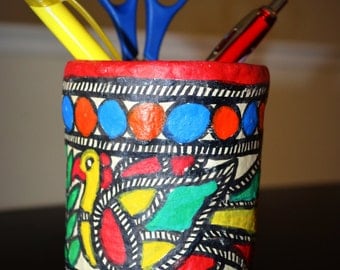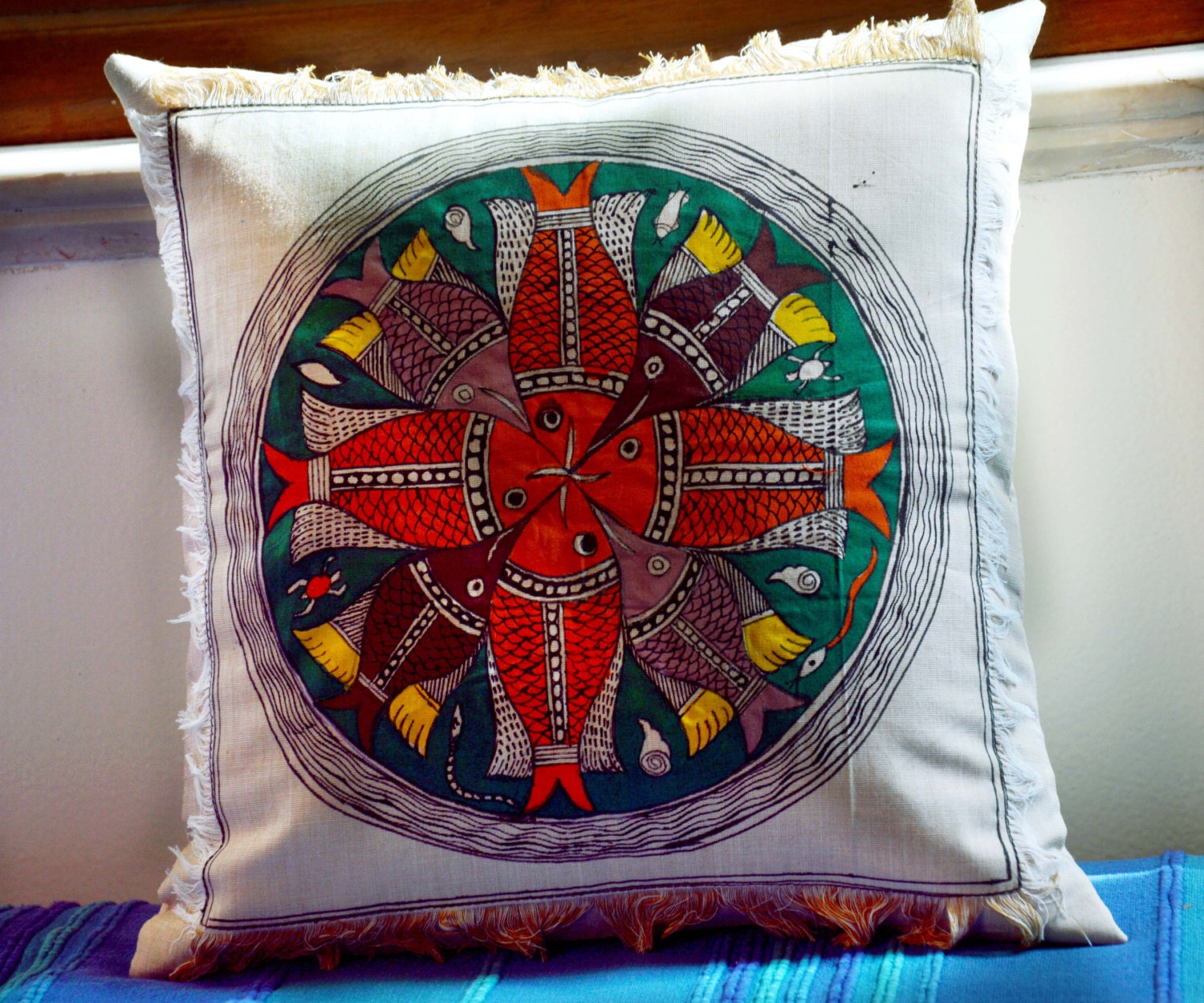FUTURE
Until
recently, the richness and variety of the folk-art of Bihar was little known,
but today the whole world is witnessing its magic. Though madhubani painting is said to have originated
since the time of the Ramayana, it has taken a whole 360
degree change in the modern world. With the growing popularity of
this art form and also due to commercialization now-a-days most of the artists are trying
their hands on other objects say for example, sarees, home décor, etc. However,
it should be noted that the main theme or style of madhubani painting has not
been changed. Let us now see apart from walls where else we can find madhubani
painting.
Wooden/ steel box
Today we can see Madhubani style design painted
on wooden/steel boxes and you’ll fall in love with these cute yet beautiful
boxes. Common who won’t love a personal wooden box to keep stuffs like
jewellery? They are amazing; isn’t it?
| Madhubani painting on a steel box |
Design on Kettle
Imagine you are organizing a tea party at your
home and there you serve tea in these fancy yet traditional tea kettles. You’ll
going to love the expressions of your guests.
 |
| Madhubani style kettle |
Hand crafted pencil holder
Gone are those days when you used to give an
ordinary pencil stand as a gift to your friends. Today is the time of hand
crafted madhubani style pencil holder thus, making it little personal and
special.
 |
| Madhubani style pencil holder |
Wall paintings
Well, this is the most common yet the most
beautiful way to decorate the home and if you are looking something to decorate
your house walls then there’s nothing better than this.
 |
| madhubani paintings |
Flower pots
Bored of watching those same ordinary, brown
flower pots? Well then why don’t opt for a madhubani style flowerpot? You can
even take out little time and create your own madhubani style flowerpot. I bet
your flowers would love it too.
 |
| Madhubani painting on flower pot |
Madhubani on Fabrics
Now this is the section where madhubani
painting have really created a mark. Madhubani paintings on fabric which mainly
includes sarees, cushions covers, blanket, shawls, etc are a huge hit. All the
girls and ladies out there won’t think twice before buying a madhubani style
saree. Even decorating your dull sofa with vibrant madhubani style cushions
will leave your living room more colourful and stylish. Apart from sarees
madhubani designs are also seen on bags which is gradually becoming a new style
statement.
| Madhubani painting on saree |
| Madhubani painting on bag |
 |
| Madhubani style cushion |
Hope after reading my post some of you there
might be actually thinking of buying any of the above mentioned things. Well,
then what are you waiting for? Go and grab some. Stay tuned to know more about
madhubani paintings.






